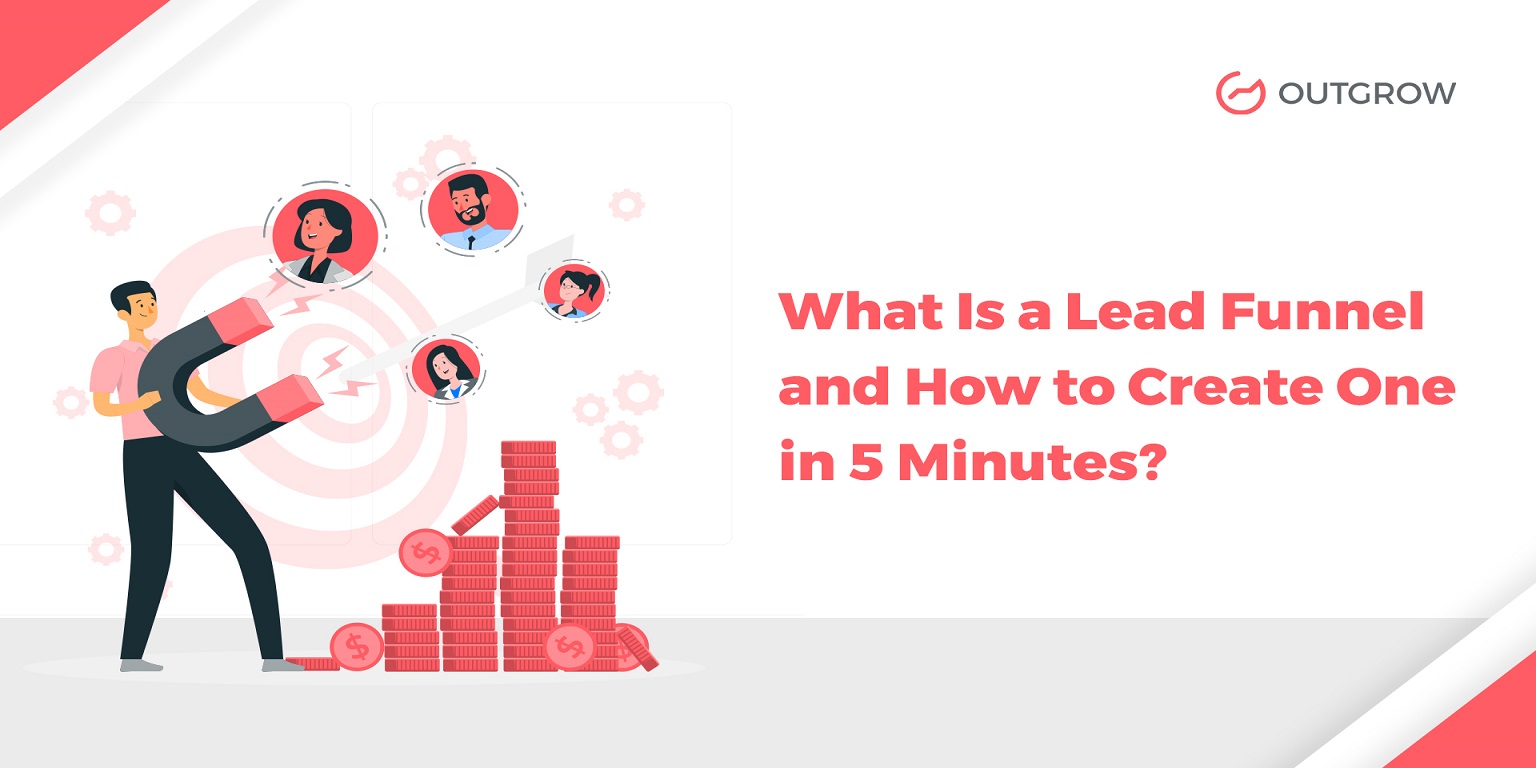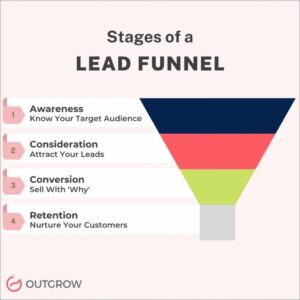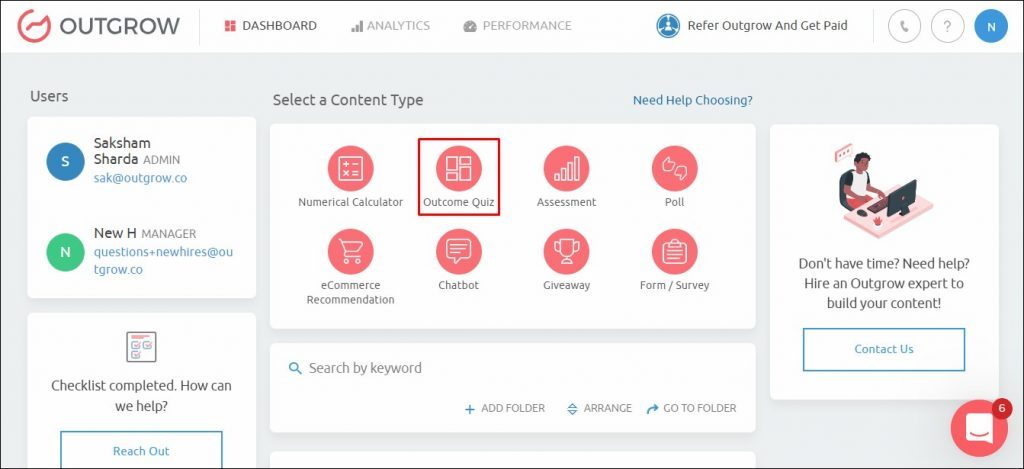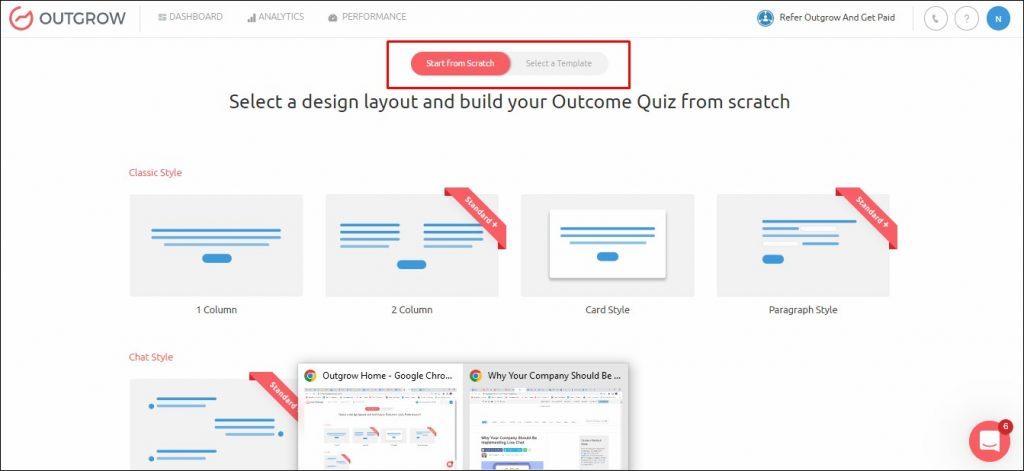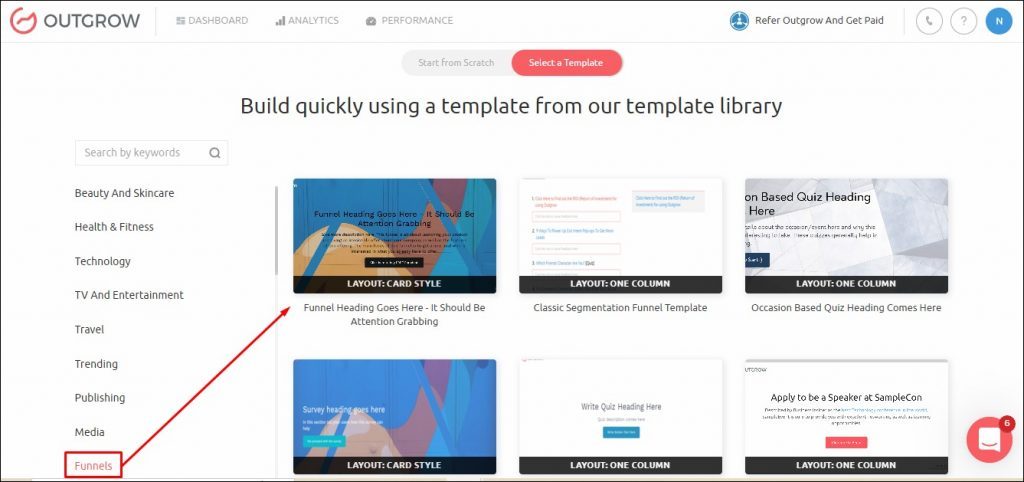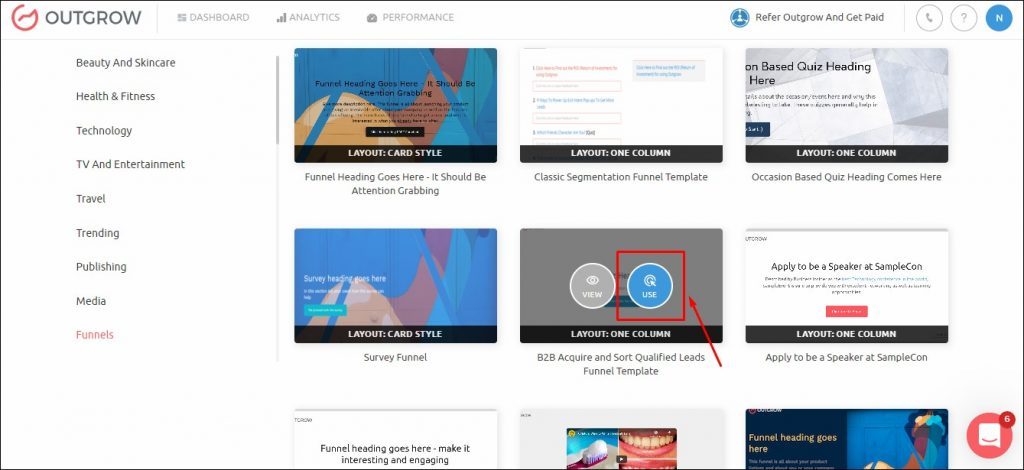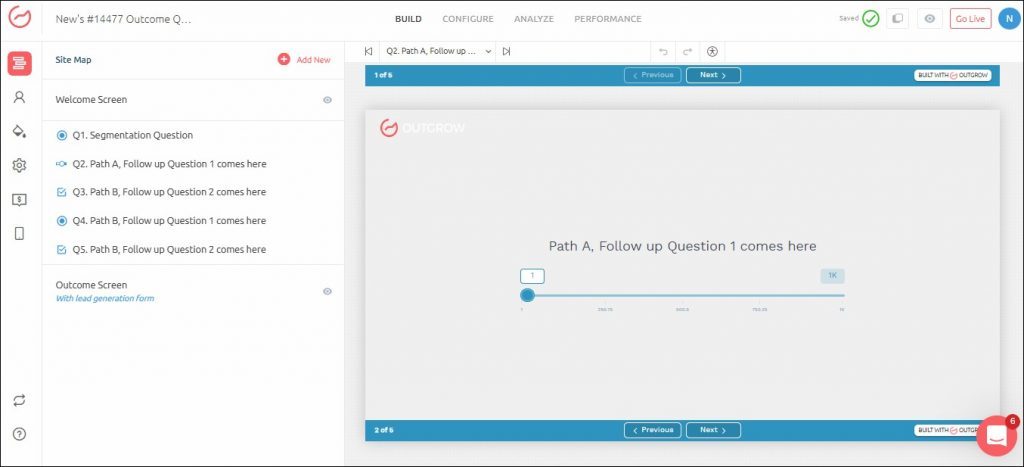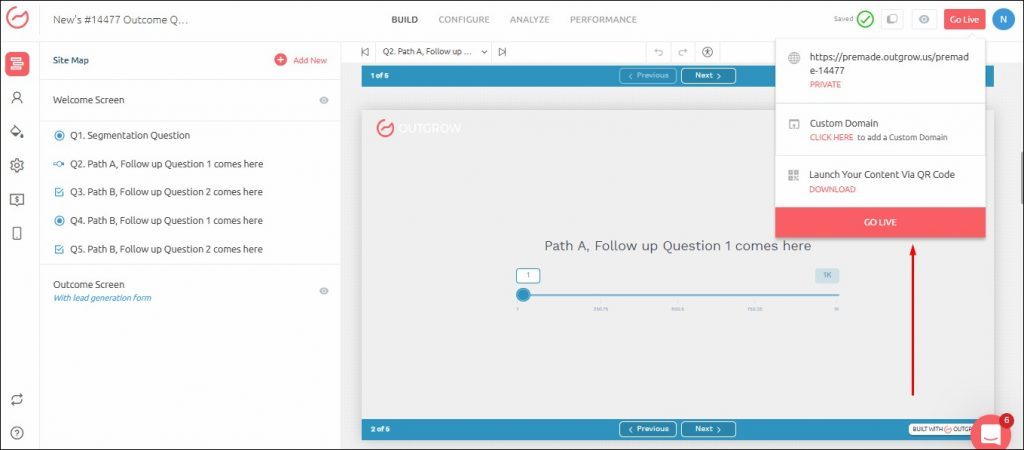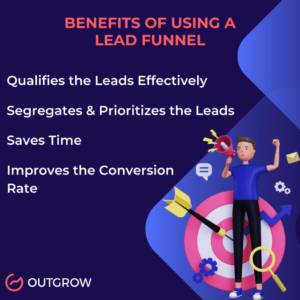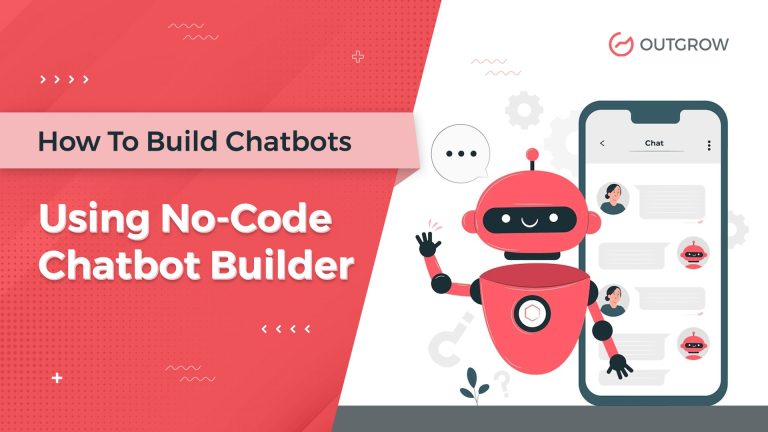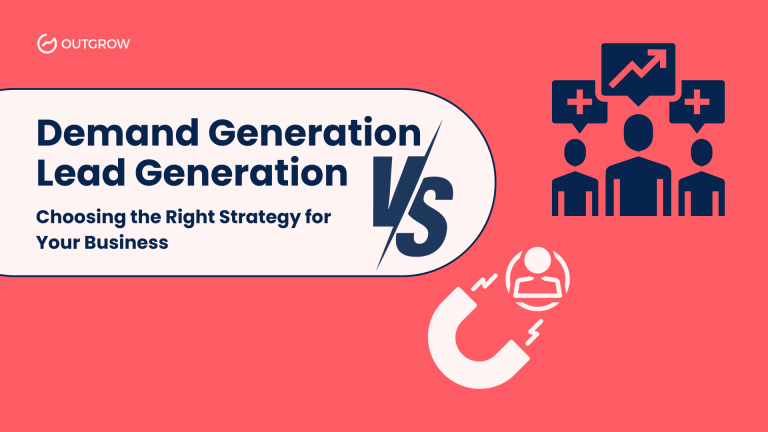What Is a Lead Funnel and How to Create One in 5 Minutes?
Table of Contents
Every business relies on a steady stream of leads to grow. That is why improving lead funnel efficiency should be among a company’s top priorities. This will help in turning cold prospects into potential customers and boost overall sales performance.
But well, it isn’t just a walk in the park. Without solid lead funnel management software, it’s quite difficult to efficiently convert leads into actual sales and grow revenues over time.
As Brian Tracy rightly said, “Approach each customer with the idea of helping him or her solve a problem or achieve a goal, not of selling a product or service.“
So, in this blog, we will discuss the various stages of a lead funnel, its benefits, and how you can build and manage a lead funnel for your team.
What Is a Lead Funnel?
A lead funnel is a systematic approach for generating potential customers through a series of distinct stages. It starts from your prospect’s first contact with you to a lead who’s interested, and finally when they reach the stage to become a paying customer.
David Edelman, a marketing strategy expert at McKinsey & Company, emphasizes the evolving nature of lead funnels: ‘The traditional funnel concept fails to capture all the touch points and key buying factors resulting from the explosion of product choices and digital channels, coupled with the emergence of an increasingly discerning, well-informed consumer.‘ This insight highlights the need for businesses to adopt a more nuanced, multi-dimensional approach to lead funnel strategies.
Constructing a lead funnel is essential for any business if a boost in ROI is something they are aiming for. But, before planning to build a lead funnel, you need to be aware of the different stages of the lead funnel.
Different Stages of a Lead Funnel
1. Awareness
The top of the funnel leads is at the awareness stage. This is where visitors come to know about your brand, your products and services, and the solution you provide for their problems.
The most effective way to make the most out of this stage is to conduct thorough research on your target audience. For example, if you’re a life coach, the initial questions of your potential clients are crucial in understanding what they need help with.
Once you know what your audience is looking for, you can offer relevant solutions and ideas instead of promoting your product vigorously. Create blog posts with relevant keywords to answer their questions and use AI to come up with keyword ideas. Additionally, fun polls and quizzes work excellently to capture user attention and make your brand look unique and interesting.
At this stage, content should focus on addressing pain points rather than selling. For example, a B2B software company might create an infographic titled ‘5 Common Productivity Challenges in Remote Teams’ to attract potential leads facing these issues.”
In this stage, the buyer is experiencing a problem and finding it difficult to find a suitable solution for it. They are looking for resources that understand their problem and help them find a solution.
For example, if your prospect is finding it difficult to find the perfect diamond jewelry for her partner, then you can target them with an interactive quiz. The quiz contains questions based on the budget, type of jewelry, design of the jewelry, metal choice, shape or cut of the diamond, etc. After the prospect completes the quiz, a few options for diamond jewelry based on the inputs received will be shown to initiate a sale.
2. Consideration
In the Consideration stage, your prospects will look for various other sources for similar products and services and compare the ones that best suit them. This is a crucial stage as it involves lead nurturing, relationship building, and establishing trust between you and your audience.
After understanding your target audience and their interests, it’s time to position content that speaks directly to the buyer’s search intent. The mid-funnel leads explore your site to find solutions for their problems and you need to prove that you are a good fit for them.
You can arouse their curiosity by offering product recommendation quizzes in order to help them understand their choices better.
3. Conversion
By the time your visitors reach the bottom of your lead generation funnel, they’re ready to buy from your brand. They are no longer visitors but are qualified leads now. Your main priority at this stage is to offer them the most suitable plan and add emotional value to it to initiate a sale.
The conversion stage requires you to focus on offering resources like an ROI calculator or showcasing your case studies and customizing pricing options in order to make the decision easier for the customer.
4. Retention
The most important part of the lead funnel is what happens after the purchase. This section is defined as customer retention and audience growth through lead nurturing. This will help set a brand up for continued success.
Even after they’ve made the purchase, try to keep your customers engaged with content that interests them and encourages them to spread the word about you. We often think of those valuable users as frequent purchasers who are loyal to our brands. But more often, they are one-time converters who need a little bit of a push to keep coming back. This can be done through running email marketing campaigns, and interactive content like product recommendations, polls, and giveaways based on their buyer journey.
5. Analytics and Optimization
The often-overlooked fifth stage of the lead funnel is continuous analysis and optimization. Implementing advanced analytics tools can provide valuable insights into user behavior, conversion rates, and ROI at each stage of the funnel. Machine learning algorithms can be employed to predict lead quality and optimize funnel performance in real-time. For instance, predictive lead scoring models can use historical data to identify the characteristics of high-value leads, allowing for more efficient resource allocation.
Now that you know the lead funnel stages, how do you make a lead funnel that works for your business?
Don’t you worry! It is easy and can be made in just a few minutes. Follow the steps below and create your own lead funnel.
How to Create a Lead Funnel Using Outgrow
Welcome to the best part of this blog!
In this section, you will learn how to create a lead funnel using Outgrow. But why do you need a lead funnel?
According to the State of Marketing Trends Report 2024 by HubSpot, 50% of marketers believe that generating leads and website traffic is their top priority. So, Outgrow helps you generate qualified leads through its interactive content and gives you an opportunity to boost your conversion rates.
Follow these steps:-
1. Log in to Outgrow’s dashboard. It is totally FREE! (If you haven’t signed up already, here’s their 7-day free trial!)
2. Select ‘Outcome Quiz’ from your Outgrow Dashboard.
3. Next, click on ‘Select a Template’ or ‘Build from Scratch’.
4. Scroll through the list and select a temple of your choice.
5. Once you’ve found the right template, simply click on ‘Use Template’ to start creating a lead funnel of your own.
6. Start customizing your template. You can edit your questions, answers, images, colors, font style, welcome screen, etc.
7. Preview your funnel once you’re done. And to finalize, hit the “Go Live” button!
We’ve created an example of a Lead Funnel using Outgrow. Have a look!
Benefits of Using a Lead Funnel
1. Qualifies the Leads Effectively
Let’s get straight to the point. Having hundreds of leads is not a good practice if they don’t convert into customers. You want to be able to close your deals, rather than chase endless dead prospects. Here qualifying the leads plays a crucial role! To qualify a lead, you should first look at how they interact with your content.
Qualifying allows you to find out whether a lead is actually a prospect and has the potential to become a customer, or not. Simply put, if you don’t qualify your leads, you are going to waste a lot of your valuable time on someone who cannot or does not even want to buy from you!
And this is where your lead funnel can save the day for you. A well-structured lead funnel can help you in sorting and qualifying your leads effectively.
2. Segregates and Prioritizes the Leads
A lead funnel simply separates quality leads from junk, so that you can reach out to the ones that are more likely to make a purchase.
But the question is how do you find out who is likely to buy and who isn’t? The answer is Buyer Persona.
Once you’ve identified your buyer persona, you can filter the leads based on your requirements and the questions asked.
Wondering which tool to use for filtering the leads? We’ve got you covered. Outgrow’s interactive content types will help you identify your target audience. Moreover, powerful analytics further helps segregate or segment the audience for personalized and effective retargeting.
3. Saves Time
Having qualified leads separated from unqualified ones will save you a lot of time and help you move leads quickly and efficiently into the next stage. You can focus more on your sales and marketing efforts on the qualified ones. This means you’ll be able to deliver relevant information quickly and address your lead’s concerns right away. This will shorten the time between contacting a new lead and closing the sale.
Besides, the more your sales funnel has been optimized, the better you’ll be able to nail down exactly what it takes to move your prospects down the funnel – from the awareness stage to the conversion stage.
4. Improves the Conversion Rate
Each business offers a unique buyer’s journey that cannot be replicated across businesses. When creating your buyer’s journey, you must understand your audience and develop a marketing strategy that maps customize content specific to each stage of their journey.
If done right, it can have a significant impact on your customer relationships and lift your overall conversions.
You can use a lead magnet funnel to find out how much money you’re spending through the sales cycle. It also shows where your opportunities for potential revenue are and how to boost your conversion rates. Your sales efforts will be better organized with a well-managed sales lead funnel, giving you more control over your results.
It has been observed that with Outgrow’s interactive content, you can get a 30-40% conversion rate, compared to 8-10% for landing pages and 2-3% for website forms. You can also embed interactive content on any webpage or use it as a separate URL, thereby increasing the conversion rate at key stages of your funnel.
Best Practices to Improve Your Funnel Lead Generation
1. Use Lead Scoring and Nurturing
Once you have plenty of leads coming in, then it becomes difficult to find the ones that are worth your time. To find the potential leads for your business you need to implement lead scoring. Lead scoring is done when you assign a numerical value to each of your leads to represent how strong it is.
The numerical value that you assign to your leads is based on the information gathered and the behavior or interests of your lead. Each business has its own criteria for prioritizing the leads. Once you are familiar with your strongest leads, then you can target and nurture them to make a purchase.
Not every lead will buy your products or services the second they will hear your products or services. So, how will you nurture your leads? You can opt for different lead generation strategies and convince them by showcasing the benefits your products provide to them.
2. Explore Different Lead Generation Strategies
If your business is sticking out to only one strategy for lead generation, then you are probably missing out on a large number of potential leads.
When it comes to generating leads, it is important to expand your horizon and explore different strategies. The most commonly used lead-generation strategies are content marketing, email marketing, and social media marketing. Support these lead-generation efforts with simple technologies like digital business cards with links to ebooks, guides, and resources. However, among the numerous available solutions, the best digital business card solution will help improve the efficiency of your lead generation efforts the most.
According to Cience, 80% of B2B companies use content marketing for lead generation. 66% of marketers use social media marketing to generate leads with LinkedIn being the top social media channel used by marketers to generate leads. 53% of marketers say email has been the most effective channel for early-stage lead generation.
3. Use Social Data to Improve Targeting
If you are aware of your ideal buyer persona, then you can use other methods to find data and improve target precision.
For example, if you know what other topics your prospects are fond of discussing on social media channels, you can use social listening tools to find other prospects discussing the same topic. In this way, you can focus on your new prospects and target them through different marketing strategies.
LinkedIn is one such social media marketing channel that lets you know more about your prospects. With Linkedin’s Advanced Search, you can define your target company or contact profile with surprising precision. For example, you can search for titles, seniorities, and keywords. To further automate the process, you can use LinkedIn Sales Navigator to get custom lead recommendations and import data directly into Salesforce.
This will help you find precise targets and helps increase ROI for your business.
Final Thoughts
Voilà, there you have it – a complete guide to building your first lead funnel!
If you follow our simple process and optimize your funnel correctly, you’ll set yourself up to build a sustainable lead generation pipeline.
So, what’re you thinking? Sign up for Outgrow’s free trial now and build the most effective and interactive lead funnel and boost your conversions!

